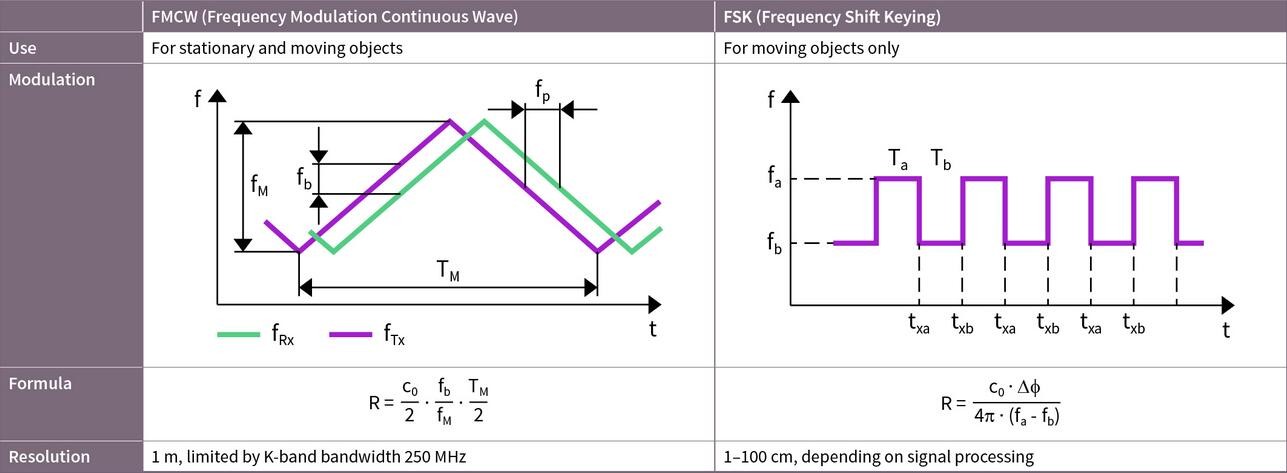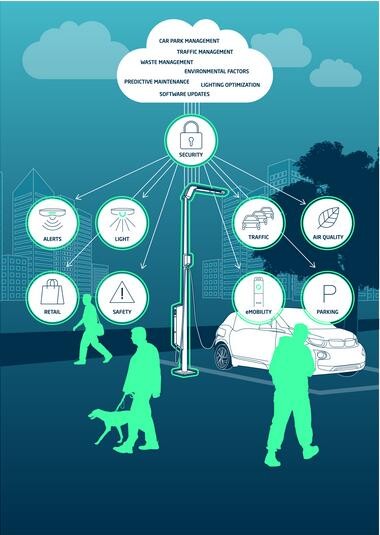As more and more people move into cities, public authorities are looking for ways to make cities, their infrastructure and energy systems smarter, safer and more energy efficient. In addition, as vehicles become more interconnected, municipal authorities now have more opportunities to interact with drivers, and intelligent traffic management brings convenience and efficiency. However, as more systems connect to the cloud, creating an “Internet of Things,†this creates more opportunities for malicious access to sensitive data.
This article will focus on some of the basic technologies that Infineon will help build the smart city of the future, and introduce our innovative lighting solutions with eluminocity and Intel – it will be one of the most intelligent aspects of a secure connected city.
Rapidly evolving urbanization and technology availability have increased consumer expectations for future convenience. So far, people are focusing on mobile terminals and products, but it is clear that enhanced infrastructure can play an important role in defining and developing the world we live in.
Higher expectations pose challenges. Public authorities must develop immigration plans that take into account major economic and social issues, such as citizens' privacy and security issues. Designers face increasingly complex challenges, some of which conflict with each other. On the one hand, they are rapidly adopting new technologies, adding more features to previous applications (such as simple street lights), and on the other hand, in the face of rising energy costs, they are working hard to minimize energy consumption.
In this wonderful new world, streetlights are no longer just lighting devices, but quickly evolve into a powerful interconnected portal that becomes a key component of smart city infrastructure. However, to ensure basic functionality and networking capabilities, lighting designers are now using cellular networking, multiple active and passive sensing technologies, and security solutions.
24 GHz radar technology
Radar is an object detection method that uses radio waves to determine the range, angle, or velocity of an object passing through an electromagnetic wave. A typical radar system consists of several components, including a transmitter that generates electromagnetic or electromagnetic waves in the radio or microwave frequency range, a transmitting antenna, a receiving antenna, and a receiver that processes the received signal.
Pulse radar measures the distance of a static or moving object by sending a strong, short-wave that can be reflected to the surface of the object. The length of time between the transmitted pulse and the received pulse is proportional to the distance of the object from the radar system.
The continuous wave method continuously emits electromagnetic waves that can be modulated in different ways. The FMCW radar (Frequency Modulated Continuous Wave) can detect stationary and moving objects by transmitting a "beep" sound mixed with the received signal. The low frequency output represents distance and speed. FSK (Frequency Shift Keying) detects the distance of a moving object. In this technique, two frequencies are transmitted in succession, and the phase-shifted Doppler signal represents the distance.

Figure 1: CW radar can detect the position of stationary and moving objects
As object detection becomes more important for many intelligent systems and devices, 24 GHz radar technology is used in a variety of applications, including multi-rotor UAVs/UAVs, smart door openers, home and factory automation, speedometers, robotics, And many other IoT-based applications.
Intelligent street light
Recently, Infineon has teamed up with eluminocity and Intel to launch a project to support the future of connected global smart cities. By combining their know-how and expertise, the three companies have collaborated to develop an advanced high-efficiency LED streetlight application with precise sensing and secure data transfer capabilities. A joint development of a smart streetlight solution based on eluminocity designed as a streetlight concept - it is used as a smart application center. Infineon technology is at the heart of the solution's advanced electronic systems, including 24 GHz radar, high-efficiency semiconductors, XMC® microcontrollers, and Infineon's highly advanced OPTIGATM family of security solutions.
Intel technology is based on modem networking, which is based on LTE Cat. 1 / LTE Cat. M1 / Cat. The NM1 / LTE-NB / 5G-IoT module supports low power, large coverage cellular network technology. Combined with Infineon's OPTIGATM technology, standardized cellular network technology provides an open system that can be flexibly expanded, completely independent of existing infrastructure, and highly secure. Street lighting management agencies (usually public authorities) only need to ensure that street lights are connected to existing infrastructure.
On the one hand, with Infineon's power management and switching devices, the streetlight itself is very efficient; on the other hand, the ability of the 24 GHz radar system to detect the presence of objects allows the streetlight to increase illumination only when needed, thus becoming a Brighter street lights are more efficient lighting solutions.

Figure 2: Smart lighting is just one of the features of these smart city smart systems
However, these eluminocity smart street lights are more than just efficient lighting solutions. Proximity detection allows them to detect nearby empty parking spaces, combined with Intel-based networking capabilities, which immediately tells nearby drivers where there is an available parking space - an element of truly intelligent traffic management. By monitoring local traffic conditions, the system provides valuable data to city planning agencies and surrounding store owners. Controlled by traffic signal traffic signs, or by providing real-time data to in-vehicle satellite navigation systems, this data can be used to guide drivers through congested sections.
Modern smart street lights can also be equipped with electric vehicle charging stations, which do not take up extra space, which is the main prerequisite for the successful implementation of electric traffic.
After years of effort PRIVA already developed as a professional manufacturer of outdoor high brightness Grille curtain LED screen supplier. Outdoor curtain with application mainly cover outdoor advertising LED display, LED media facade and so on. Regarding to weakness of traditional led display like heavy, light tight, hard to be assembly\debug\maintain, high cost, PRIVA has developed a new seris of grille curtain led display whose transparent rate is up to 80%, to respond the call on of display industry. PRIVA grille curtain series solve the problem where there is a led screen there is no light, successfully. Following policy of some cuntries, LED media facade or Curtain led display screen must past EMC-B. This series of products is to solve this problem.
Curtain LED display, Grille led screen, Led Media facade, LED strip curtain, LED media facade EMC-B, Transparent Led display
Shenzhen Priva Tech Co., Ltd. , https://www.privaled.com